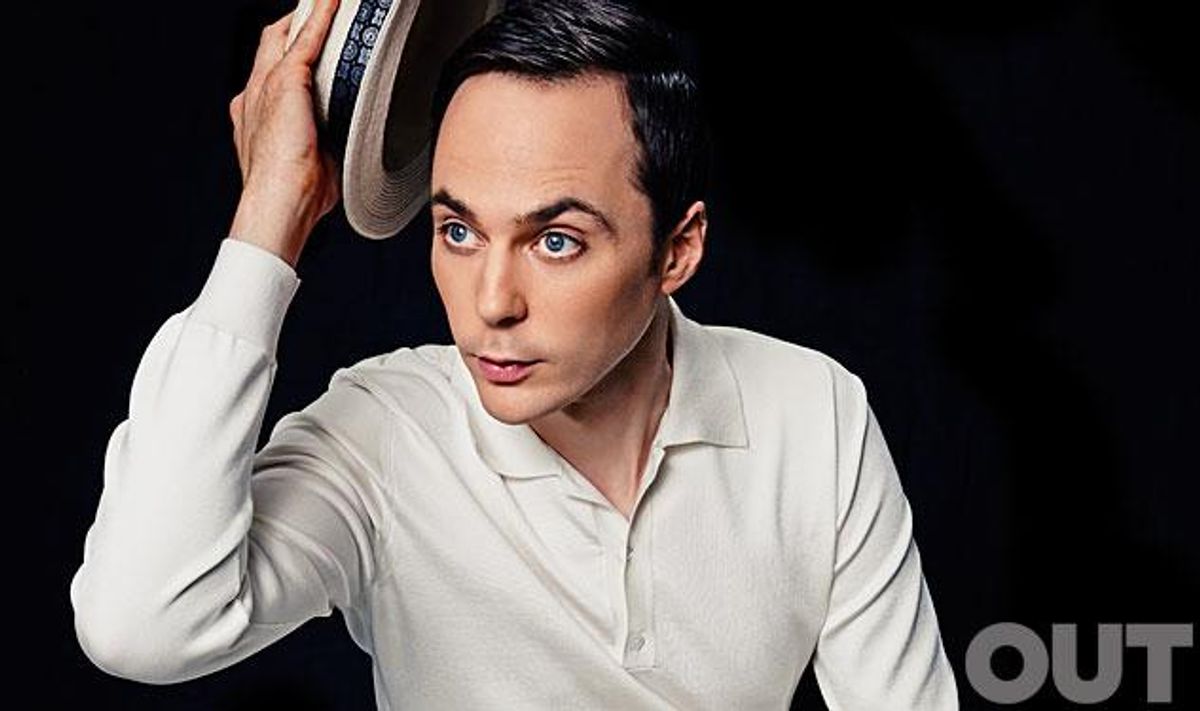Armond White
Jim Parsons Is So Bad He's Good

Danielle Levitt
How Hidden Figures bucks gay stereotypes
December 21 2016 10:23 AM EST
May 01 2018 11:58 PM EST
By continuing to use our site, you agree to our Private Policy and Terms of Use.

How Hidden Figures bucks gay stereotypes
Janelle Monae, Taraji P. Henson and Octavia Spencer--all diva icons--portray three of the pioneering black mathematicians who helped NASA calculate its first manned space flight trajectories of the 1960s in Hidden Figures. Ultra femme Janelle, badass Taraji, and no-nonsense Octavia don't hide their light under a bushel. Unhidden, they personify the full-fledged, unembarrassed femininity that drag artists admire and tightens the knots in gay men's apron strings.
But peek around this trio's historic fabulousness and check-out Jim Parsons, the celebrated out actor and star of TV's The Big Bang Theory who, here, makes his own kind of history. Parsons portrays NASA engineer Paul Stafford, a white-collar statistician and theorist who is comfortable in his white male privilege and doesn't give it up, even when the Civil Rights Era intrudes on his entitlement. Parsons limns the role with familiar imperiousness. Even portraying a racist, he's recognizably fey, which queers the stereotypical image of bigots. There are no Oscars for this kind of courage.
Stafford obstructs every effort made by Henson's Katherine Johnson (focal subject of the book-length history Hidden Figures by Margot Lee Shetterly from which the film is adapted). While the black women forge ahead, enduring the indignities of segregated rest rooms and hostile co-workers who deny their education and competence by ostracism and hostility, Parsons' Stafford remains unmoved. He reduces Johnson's job qualifications to secretarial duty ("It's a dummy check!"). He even denies her byline on official papers. ("Computers don't author reports.")
Parsons stays in character like a serious actor who knows there's a bigger subject than his own likability. He forces viewers to realize that even gay people are fallible--and that takes integrity in the p.c. era. We should not expect actors to only portray gay characters as martyrs and saints. Stafford's flawed humanity makes him another hidden figure.
Stafford's opposite is his boss, NASA research manager Al Harrison, played with alpha male authority by Kevin Costner channeling his romantic integrity from The Bodyguard. Costner's bulging abs stretch to take down a White's Only sign on the ladies' restroom using a crow bar. His all-American morality is admirably masculine. (Director Theodore Melfi puts subtle emphasis on male and female torsos; this is the girdle movie of the year.) Best of all is the scene where Harrison tells Stafford "You know what your job is, Paul? To find the genius among those geniuses to pull us all up."
Hidden Figures elevates and celebrates American social progress without being sanctimoniousness. Its female trio works, so does Mahershala Ali, in another charming performance following Moonlight as Henson's military beau who learns to appreciate a woman's true worth. But it is Parsons who provides the film's most original life lesson.
Stafford is a gay man with more to learn. He comes to grudgingly appreciate Johnson's intellect (She knows what "conic periapsis" means.) His change of heart is sensible, not magical and the film ends meaningfully with his kindly gesture: He brings Johnson, his brilliant, hard-working peer, a cup of coffee. But don't drink that coffee, girl!
Hidden Figures is playing in theaters now.
Want more breaking equality news & trending entertainment stories?
Check out our NEW 24/7 streaming service: the Advocate Channel!
Download the Advocate Channel App for your mobile phone and your favorite streaming device!